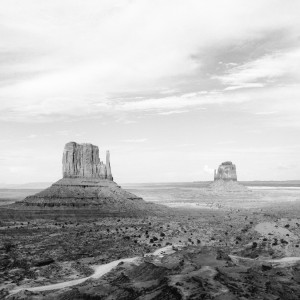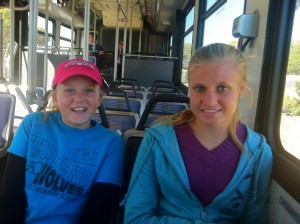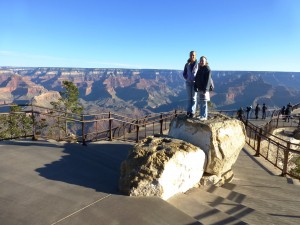The government shutdown ended last week, but the economic impact on communities and human impact of the national park impact remain significant.

BYU grad James Schouten visited the Grand Canyon National Park with his daughters the day the park reopened, Oct. 12. He said although it had reopened, many had been disappointed during the closure.
“There was an 85-year-old man who came all the way from Germany,” Schouten said. “The canyon was closed, so he paid to fly over it, but the weather didn’t cooperate. He said, ‘I’ve waited my whole life to see it. I’m five miles away. I guess I’ll never see it.'”
Schouten said he doubted that the story was uncommon. Fall weather draws many crowds to Utah’s parks. October is a peak month for tourism, yielding about $100 million in tourism-related revenue for the state.
“Many of them have been hit extremely hard,” said Utah Sen. J. Stuart Adams in the special meeting called by Governor Gary R. Herbert on Oct 16. “We’re sensitive to making sure our businesses are taken care of. We understand as businesses do well, that creates tax revenue.”
The governor signed a proclamation convening the Utah Legislature into a special session Oct. 14. The governor and the United States Department of Interior agreed to use Utah state funds to open five parks.

“Utah’s national parks are the backbone of many rural economies, and hard-working Utahns are paying a heavy price for this shutdown,” Herbert said.
Stuart said one report estimated for every $1.7 million the governor spent, $12.3 to $33 million of revenue could be generated. Approximately $6 million would be revenue for the state of Utah.
Many hotels took a hard hit. Rudy’s Inn in Bryce Canyon has suffered a $2 million loss and only expects to recover half a million in revenue, according to Jay Kinghorn of Utah Tourism.
“The shutdown has been like turning off a faucet,” Kinghorn said. “Once Governor Herbert helped, the faucet started to turn back on.”
Breck Dockstader, general manager of Cliffrose Lodge at Zion National Park, said the lodge has suffered a $20,000 loss in revenue, but that amount is nothing compared to its neighbors.
“It’s quite bad for us, but some lost 40 to 50 percent of their income,” Dockstader said. “The place where we got hurt the most was the last two weeks of October because so many tourists were scared and cancelled.”
All of the major U.S. national parks have been affected. The Grand Canyon reported a loss of $1.2 million a day of gross revenue. Although the Grand Canyon has reopened, it has approximately one-third of the visitors expected. The lack of visitors costs the community several hundred thousand dollars a day, according to Grand Canyon public affairs.
Dockstader said Zion suffered relatively less because tourists came from Bryce Canyon National Park and the Grand Canyon. Tourists could drive through Zion and still see parts of the park, whereas Bryce and the Grand Canyon were not viewable from any road.
“It was almost like the Grand Canyon was opening for the first time,” Schouten said. “We were by the most popular hotel in the country (Phantom Ranch), and you could get a walk-in reservation. You could tell they hadn’t gotten a fresh shipment of food.”
Yellowstone National Park expects to lose approximately $440,000 in revenue in October. The community normally collects approximately $98 per visitor per a day. The economic community hit is estimated to be $13.5 million, according to Yellowstone public affairs.

The exact economic impact on all Utah communities will not be known for weeks, but the housing market, known as a “thermometer” for the overall health of an economy, all but shut down when the government did.
Utah real estate went virtually silent for the 16 days the government was closed.
“People were worried and told me they didn’t want to do anything until things were settled,” said Kyle Kelley, a real estate agent from an Orem brokerage. “There has been a chill on the market ever since the shutdown, and now people are more cautious than ever.”
The question on everyone’s mind currently is how the market will proceed. During the shutdown, interest rates dropped as a result of the possibility of a government default on mortgaged backed bonds, reflecting a poor market. As soon as the bill was signed to law, interested rates bounced right back up.
However, Gaylon Ashby, a loan officer for First Colony Mortgage said there is still unsurety in predicting the market’s future.
“The market depends heavily upon confidence in the federal government,” Ashby said. “If the government can show stable processes, in reaching a debt solution and more, the market will become more predictable and stable. If the government continues to be unpredictable, fewer people will buy.”




